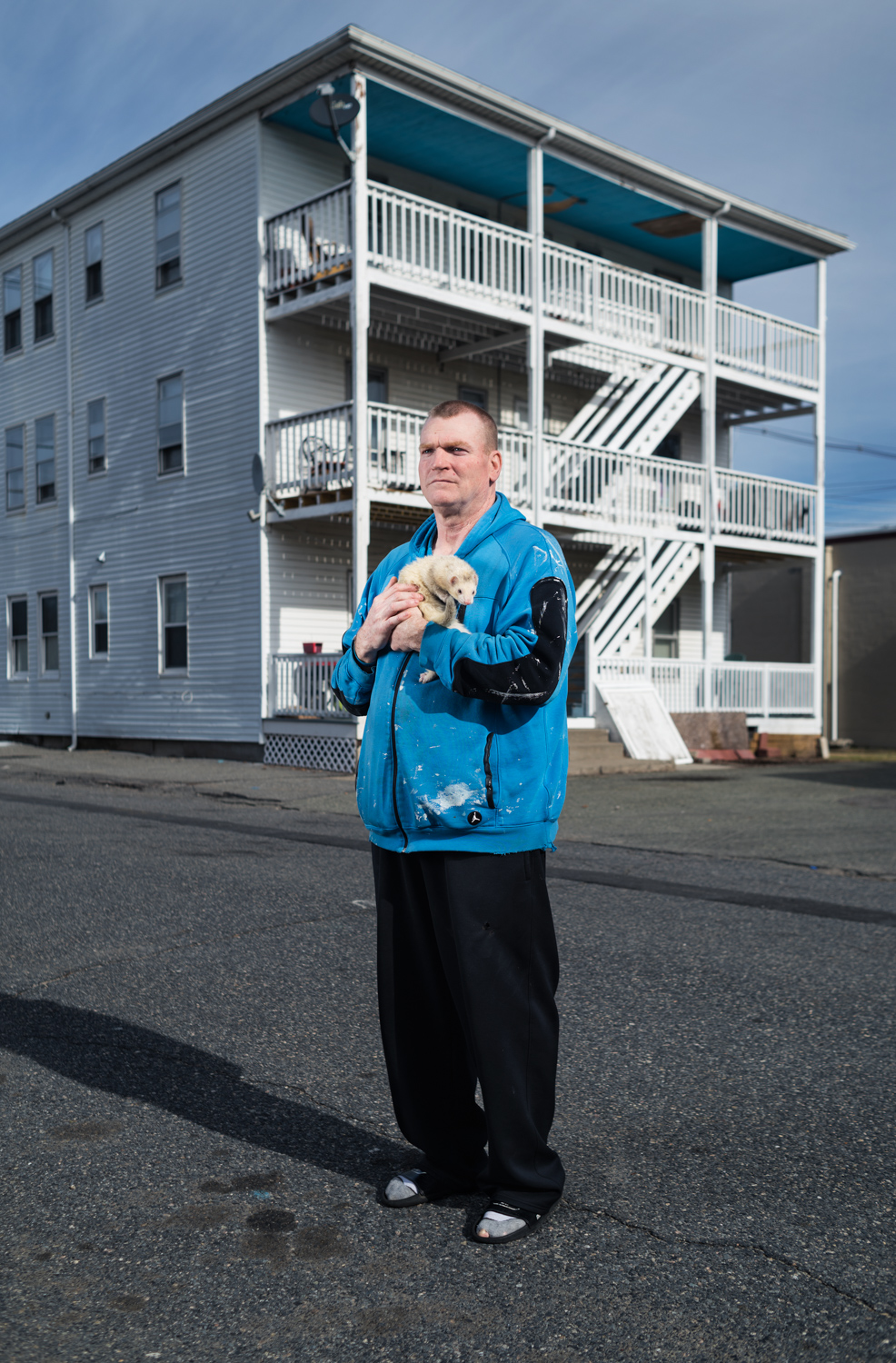
Almost a decade removed from the foreclosure crisis that began in 2008, the United States is facing one of the worst affordable-housing shortages in generations. The standard of “affordable” housing is that which costs roughly 30 percent or less of a family’s income. Because of rising housing costs and stagnant wages, slightly more than half of all poor renting families in the country spend more than 50 percent of their income on housing costs, and at least one in four spends more than 70 percent. Yet America’s national housing policy gives affluent homeowners large benefits; middle-class homeowners, smaller benefits; and most renters, who are disproportionately poor, nothing. It is difficult to think of another social policy that more successfully multiplies America’s inequality in such a sweeping fashion.
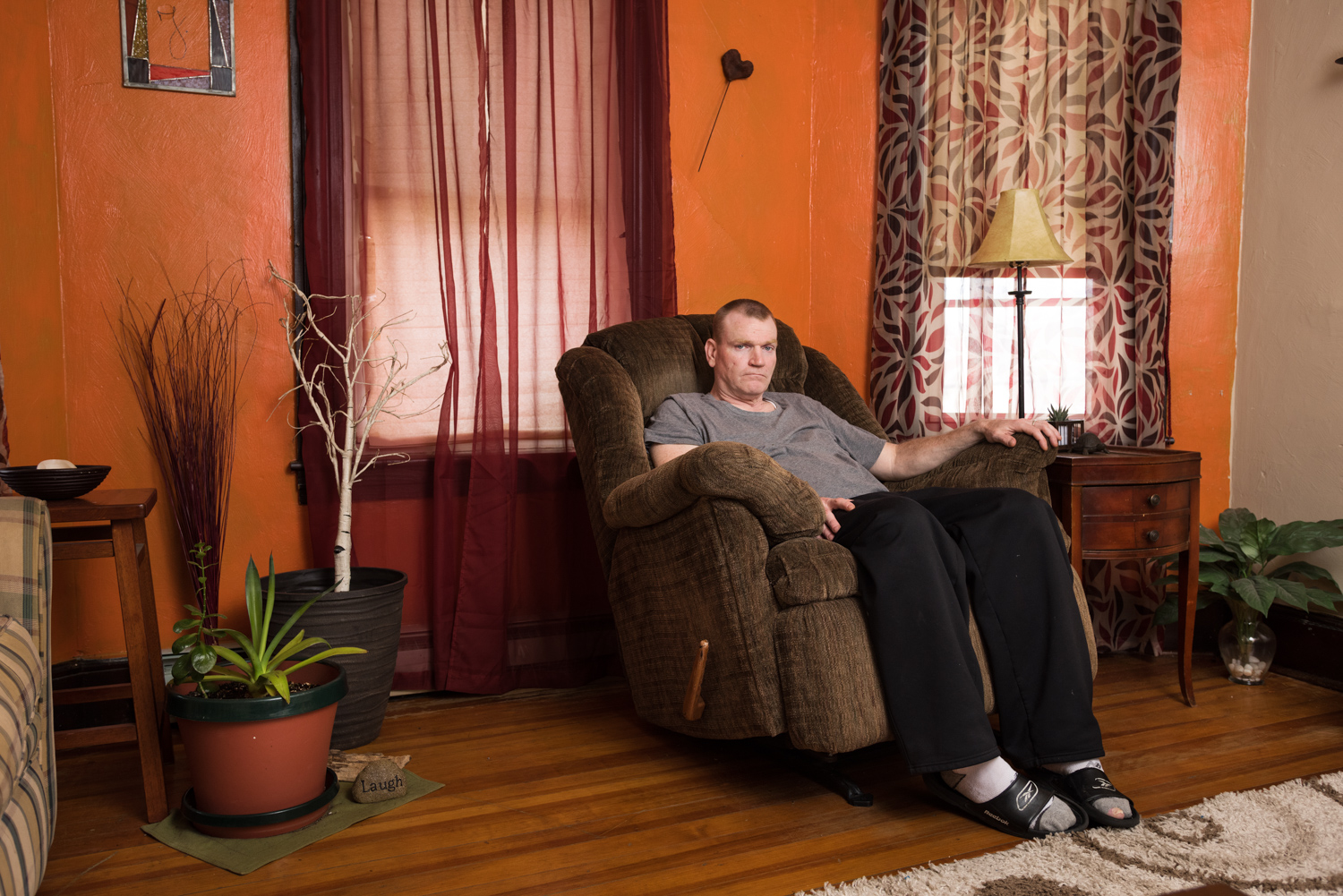
Almost a decade removed from the foreclosure crisis that began in 2008, the United States is facing one of the worst affordable-housing shortages in generations. The standard of “affordable” housing is that which costs roughly 30 percent or less of a family’s income. Because of rising housing costs and stagnant wages, slightly more than half of all poor renting families in the country spend more than 50 percent of their income on housing costs, and at least one in four spends more than 70 percent. Yet America’s national housing policy gives affluent homeowners large benefits; middle-class homeowners, smaller benefits; and most renters, who are disproportionately poor, nothing. It is difficult to think of another social policy that more successfully multiplies America’s inequality in such a sweeping fashion.

Almost a decade removed from the foreclosure crisis that began in 2008, the United States is facing one of the worst affordable-housing shortages in generations. The standard of “affordable” housing is that which costs roughly 30 percent or less of a family’s income. Because of rising housing costs and stagnant wages, slightly more than half of all poor renting families in the country spend more than 50 percent of their income on housing costs, and at least one in four spends more than 70 percent. Yet America’s national housing policy gives affluent homeowners large benefits; middle-class homeowners, smaller benefits; and most renters, who are disproportionately poor, nothing. It is difficult to think of another social policy that more successfully multiplies America’s inequality in such a sweeping fashion.
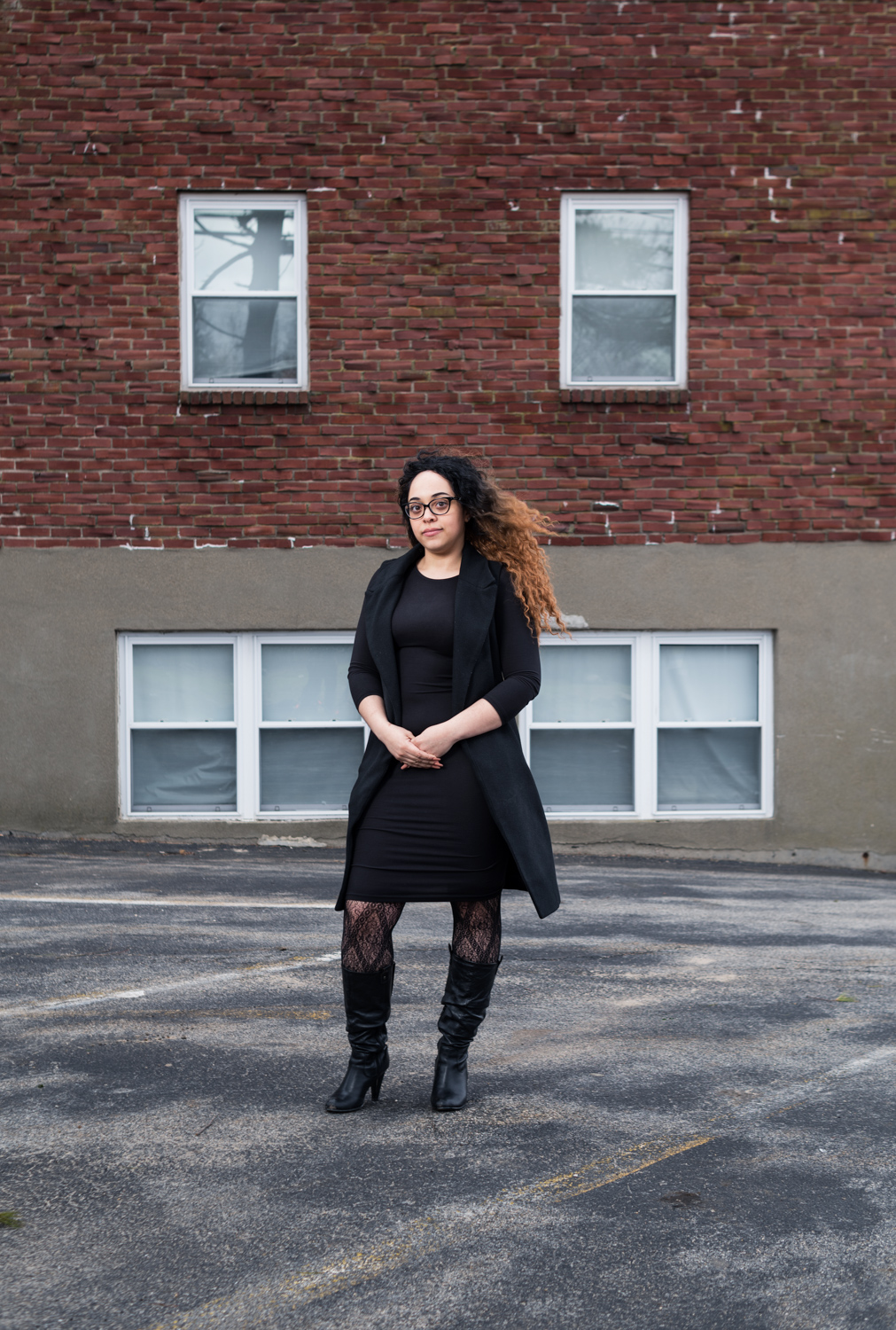
Almost a decade removed from the foreclosure crisis that began in 2008, the United States is facing one of the worst affordable-housing shortages in generations. The standard of “affordable” housing is that which costs roughly 30 percent or less of a family’s income. Because of rising housing costs and stagnant wages, slightly more than half of all poor renting families in the country spend more than 50 percent of their income on housing costs, and at least one in four spends more than 70 percent. Yet America’s national housing policy gives affluent homeowners large benefits; middle-class homeowners, smaller benefits; and most renters, who are disproportionately poor, nothing. It is difficult to think of another social policy that more successfully multiplies America’s inequality in such a sweeping fashion.
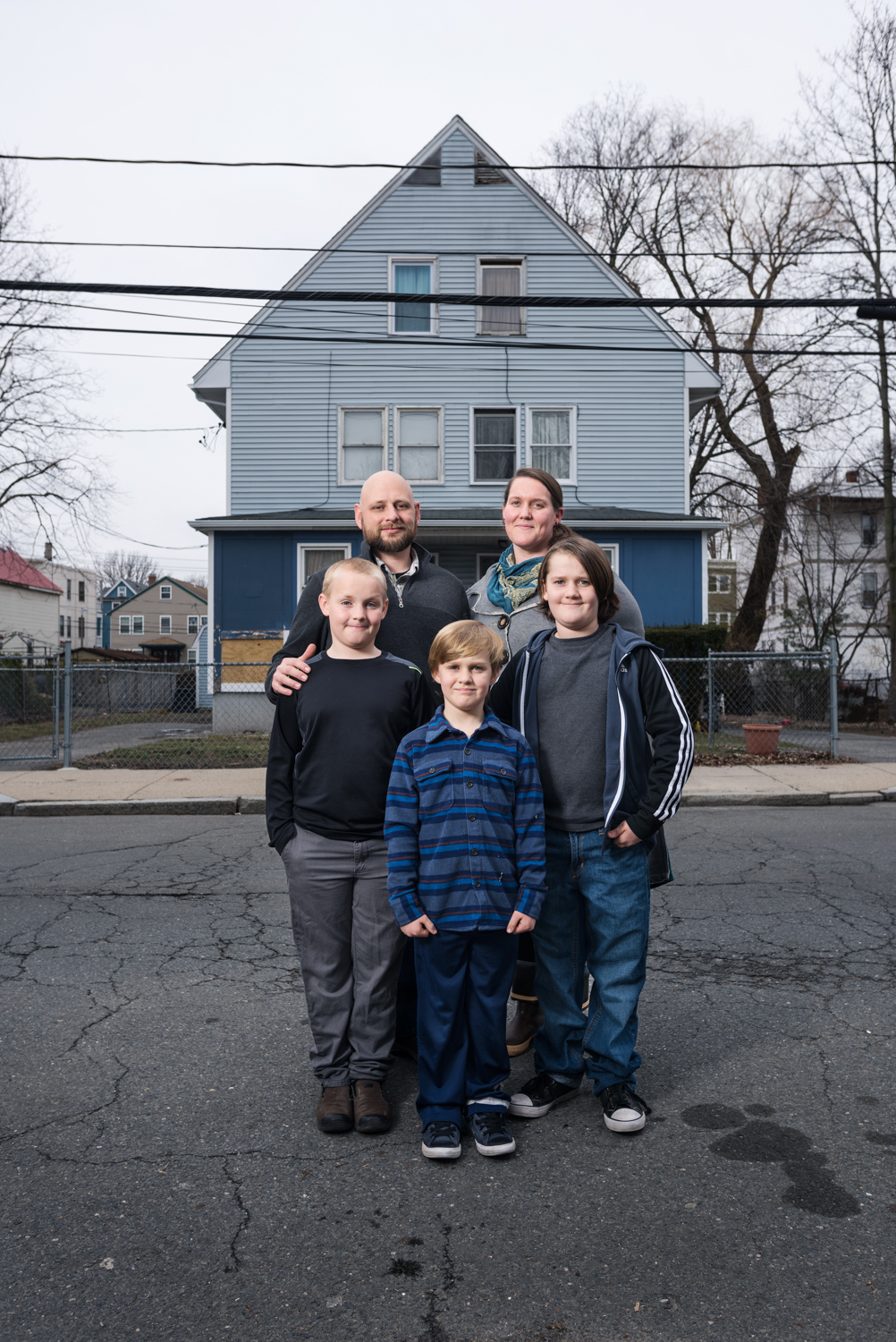
Almost a decade removed from the foreclosure crisis that began in 2008, the United States is facing one of the worst affordable-housing shortages in generations. The standard of “affordable” housing is that which costs roughly 30 percent or less of a family’s income. Because of rising housing costs and stagnant wages, slightly more than half of all poor renting families in the country spend more than 50 percent of their income on housing costs, and at least one in four spends more than 70 percent. Yet America’s national housing policy gives affluent homeowners large benefits; middle-class homeowners, smaller benefits; and most renters, who are disproportionately poor, nothing. It is difficult to think of another social policy that more successfully multiplies America’s inequality in such a sweeping fashion.

Almost a decade removed from the foreclosure crisis that began in 2008, the United States is facing one of the worst affordable-housing shortages in generations. The standard of “affordable” housing is that which costs roughly 30 percent or less of a family’s income. Because of rising housing costs and stagnant wages, slightly more than half of all poor renting families in the country spend more than 50 percent of their income on housing costs, and at least one in four spends more than 70 percent. Yet America’s national housing policy gives affluent homeowners large benefits; middle-class homeowners, smaller benefits; and most renters, who are disproportionately poor, nothing. It is difficult to think of another social policy that more successfully multiplies America’s inequality in such a sweeping fashion.
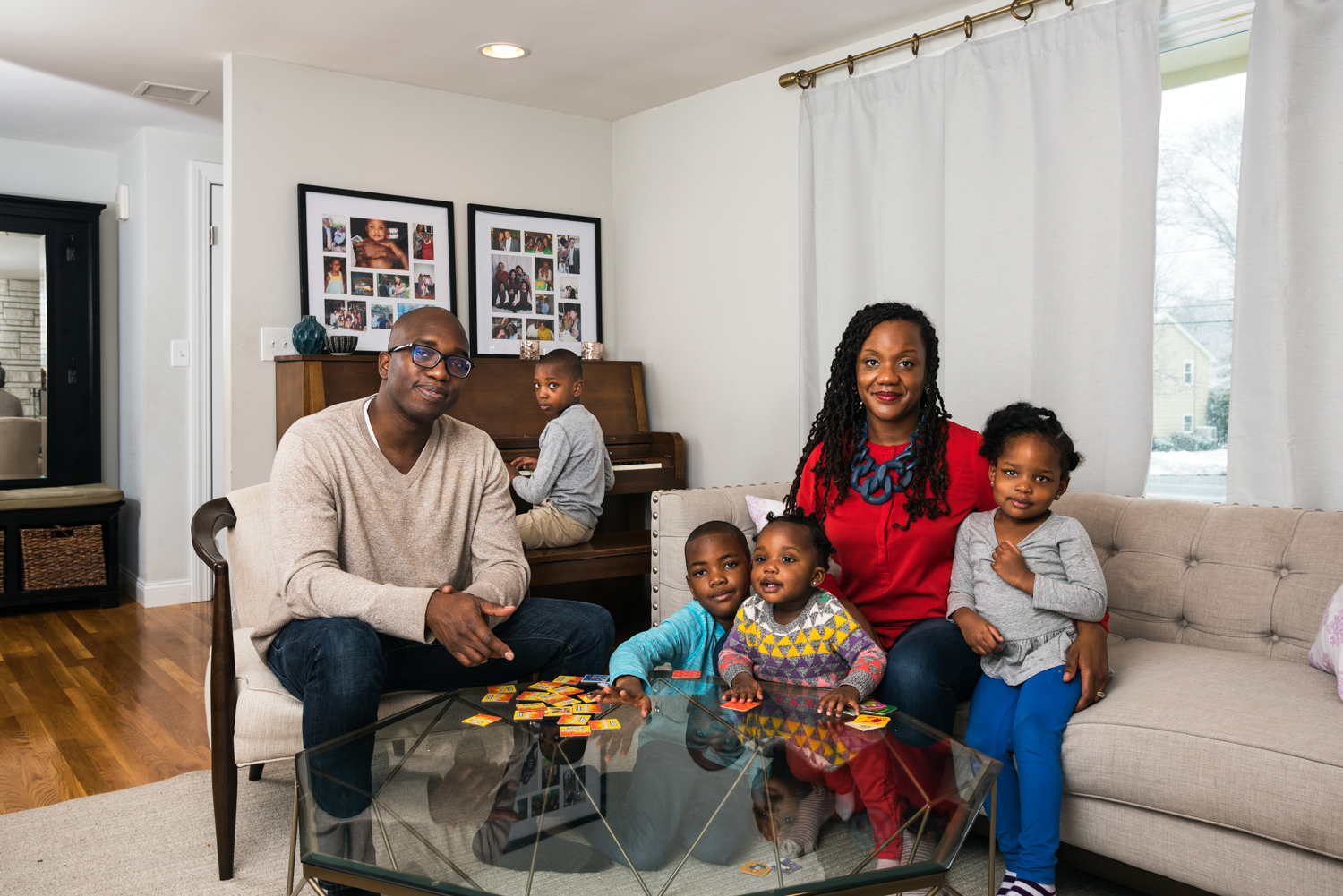
Almost a decade removed from the foreclosure crisis that began in 2008, the United States is facing one of the worst affordable-housing shortages in generations. The standard of “affordable” housing is that which costs roughly 30 percent or less of a family’s income. Because of rising housing costs and stagnant wages, slightly more than half of all poor renting families in the country spend more than 50 percent of their income on housing costs, and at least one in four spends more than 70 percent. Yet America’s national housing policy gives affluent homeowners large benefits; middle-class homeowners, smaller benefits; and most renters, who are disproportionately poor, nothing. It is difficult to think of another social policy that more successfully multiplies America’s inequality in such a sweeping fashion.

Almost a decade removed from the foreclosure crisis that began in 2008, the United States is facing one of the worst affordable-housing shortages in generations. The standard of “affordable” housing is that which costs roughly 30 percent or less of a family’s income. Because of rising housing costs and stagnant wages, slightly more than half of all poor renting families in the country spend more than 50 percent of their income on housing costs, and at least one in four spends more than 70 percent. Yet America’s national housing policy gives affluent homeowners large benefits; middle-class homeowners, smaller benefits; and most renters, who are disproportionately poor, nothing. It is difficult to think of another social policy that more successfully multiplies America’s inequality in such a sweeping fashion.
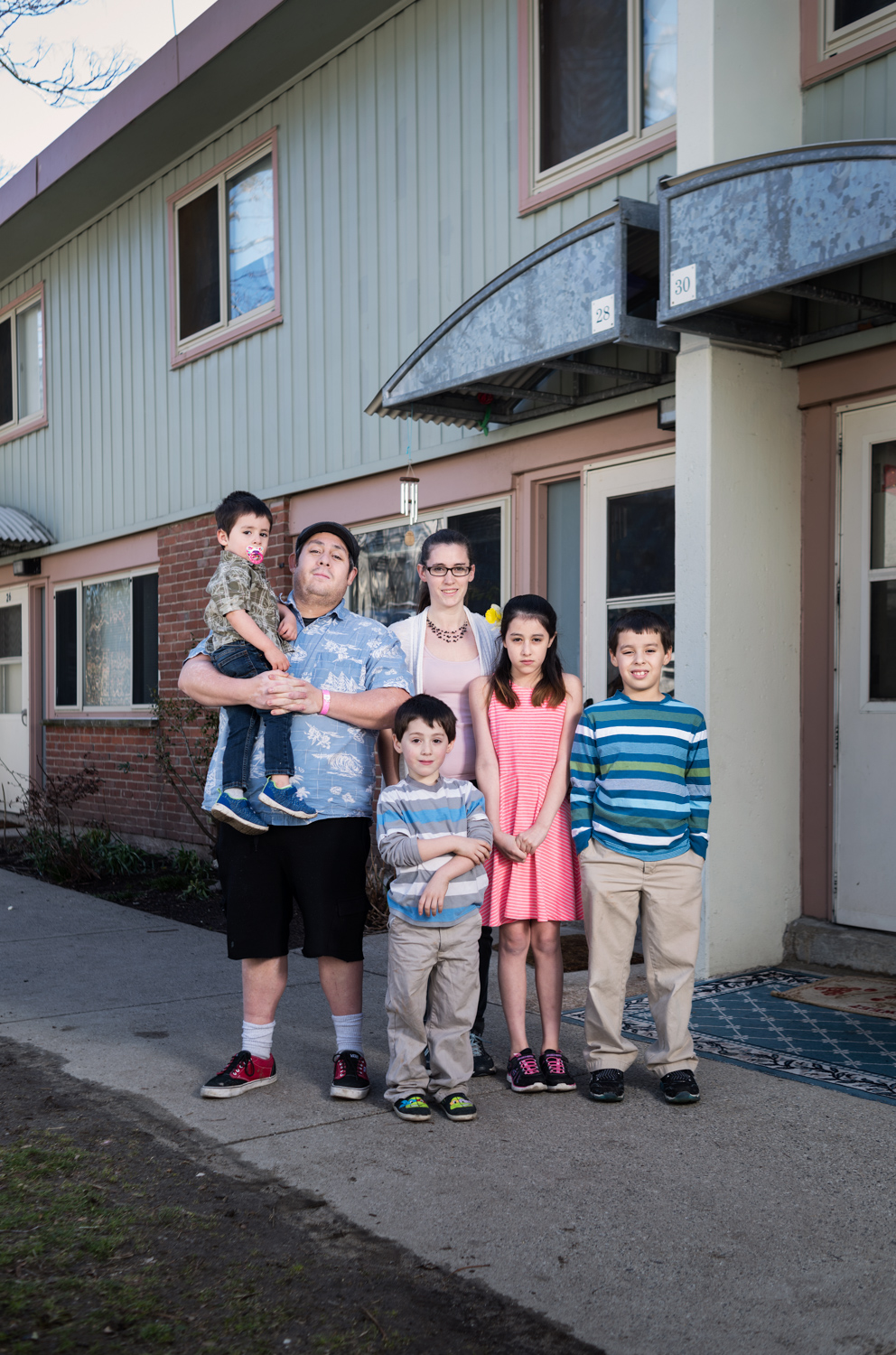
Almost a decade removed from the foreclosure crisis that began in 2008, the United States is facing one of the worst affordable-housing shortages in generations. The standard of “affordable” housing is that which costs roughly 30 percent or less of a family’s income. Because of rising housing costs and stagnant wages, slightly more than half of all poor renting families in the country spend more than 50 percent of their income on housing costs, and at least one in four spends more than 70 percent. Yet America’s national housing policy gives affluent homeowners large benefits; middle-class homeowners, smaller benefits; and most renters, who are disproportionately poor, nothing. It is difficult to think of another social policy that more successfully multiplies America’s inequality in such a sweeping fashion.
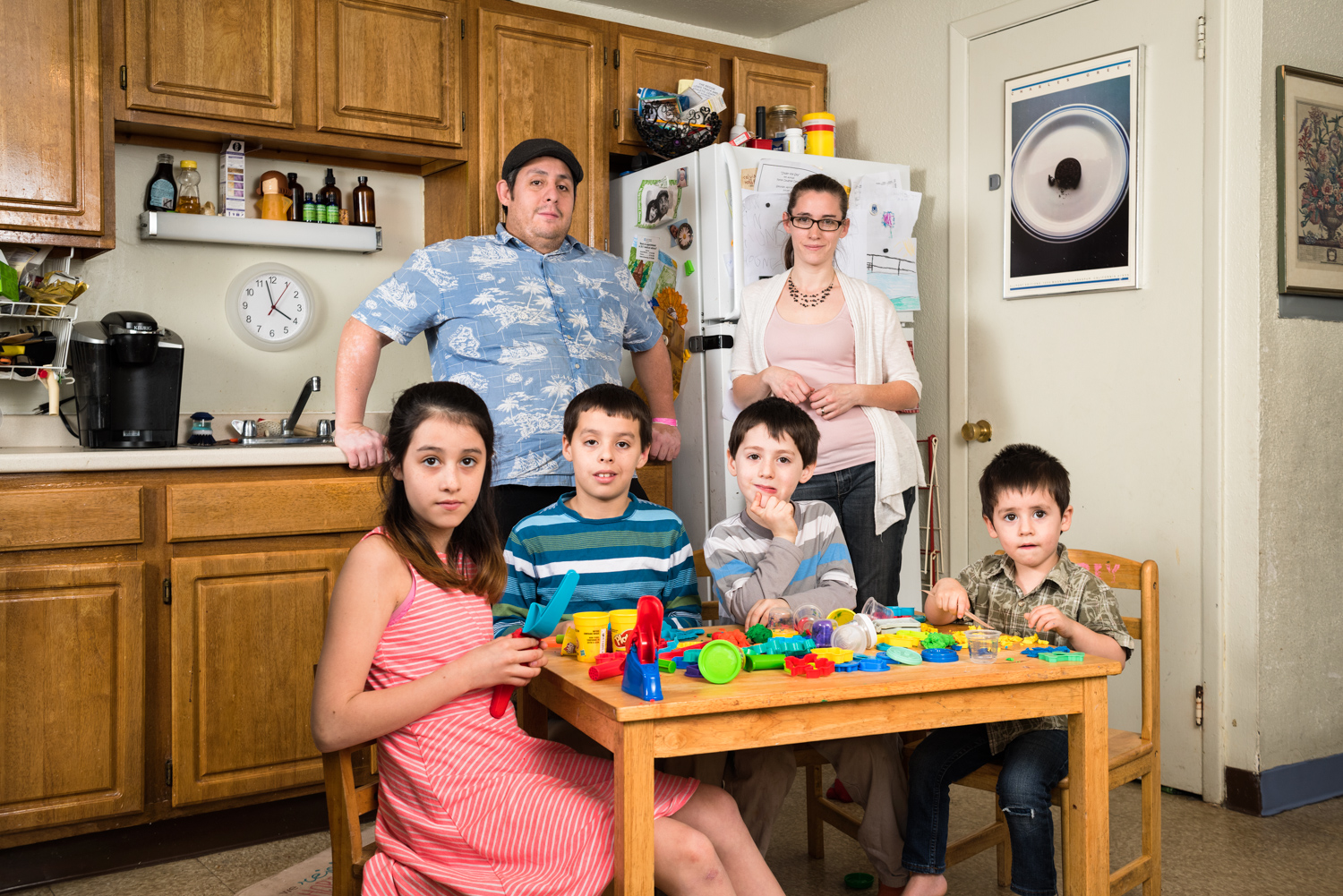


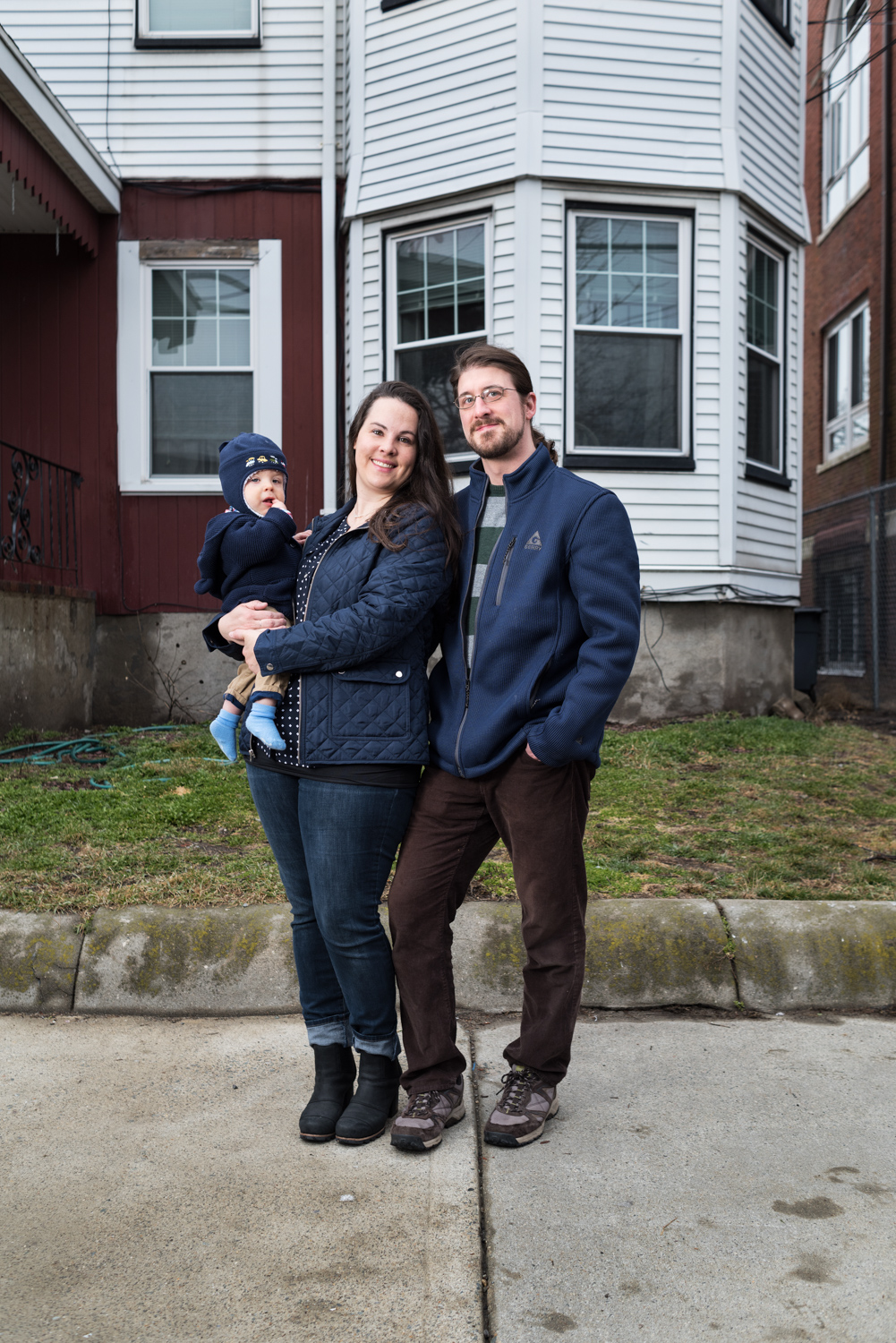
Almost a decade removed from the foreclosure crisis that began in 2008, the United States is facing one of the worst affordable-housing shortages in generations. The standard of “affordable” housing is that which costs roughly 30 percent or less of a family’s income. Because of rising housing costs and stagnant wages, slightly more than half of all poor renting families in the country spend more than 50 percent of their income on housing costs, and at least one in four spends more than 70 percent. Yet America’s national housing policy gives affluent homeowners large benefits; middle-class homeowners, smaller benefits; and most renters, who are disproportionately poor, nothing. It is difficult to think of another social policy that more successfully multiplies America’s inequality in such a sweeping fashion.
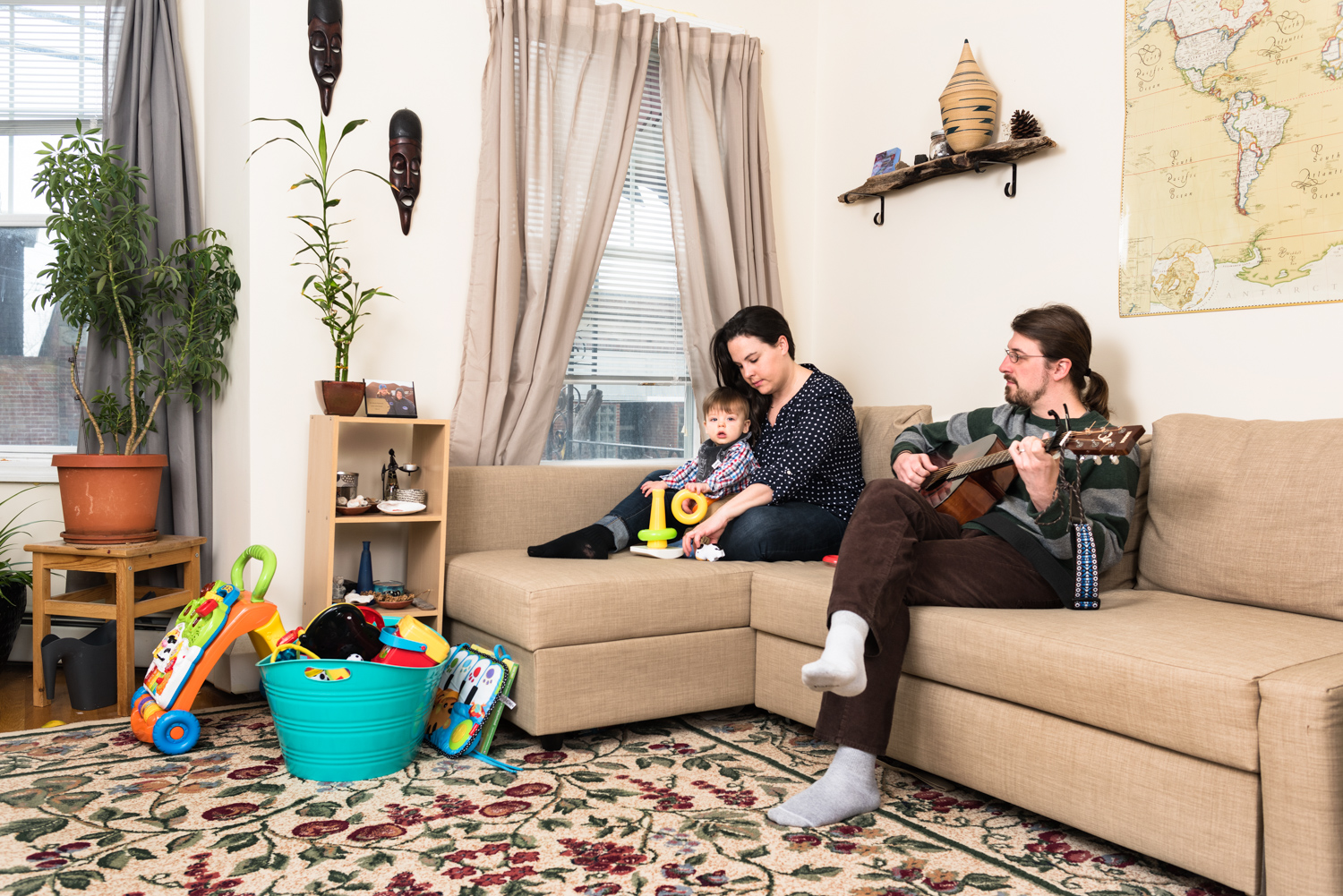
Almost a decade removed from the foreclosure crisis that began in 2008, the United States is facing one of the worst affordable-housing shortages in generations. The standard of “affordable” housing is that which costs roughly 30 percent or less of a family’s income. Because of rising housing costs and stagnant wages, slightly more than half of all poor renting families in the country spend more than 50 percent of their income on housing costs, and at least one in four spends more than 70 percent. Yet America’s national housing policy gives affluent homeowners large benefits; middle-class homeowners, smaller benefits; and most renters, who are disproportionately poor, nothing. It is difficult to think of another social policy that more successfully multiplies America’s inequality in such a sweeping fashion.
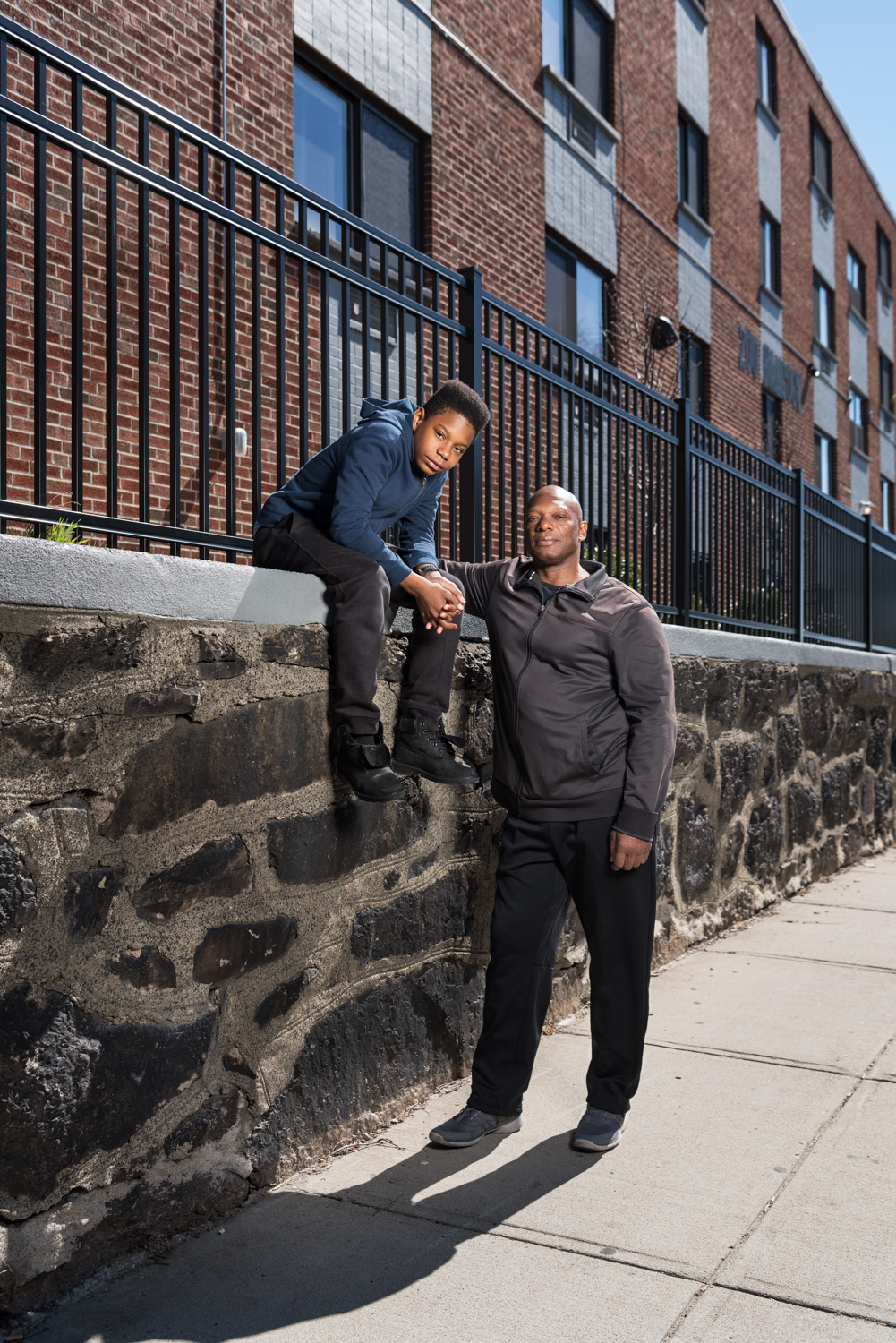
Almost a decade removed from the foreclosure crisis that began in 2008, the United States is facing one of the worst affordable-housing shortages in generations. The standard of “affordable” housing is that which costs roughly 30 percent or less of a family’s income. Because of rising housing costs and stagnant wages, slightly more than half of all poor renting families in the country spend more than 50 percent of their income on housing costs, and at least one in four spends more than 70 percent. Yet America’s national housing policy gives affluent homeowners large benefits; middle-class homeowners, smaller benefits; and most renters, who are disproportionately poor, nothing. It is difficult to think of another social policy that more successfully multiplies America’s inequality in such a sweeping fashion.
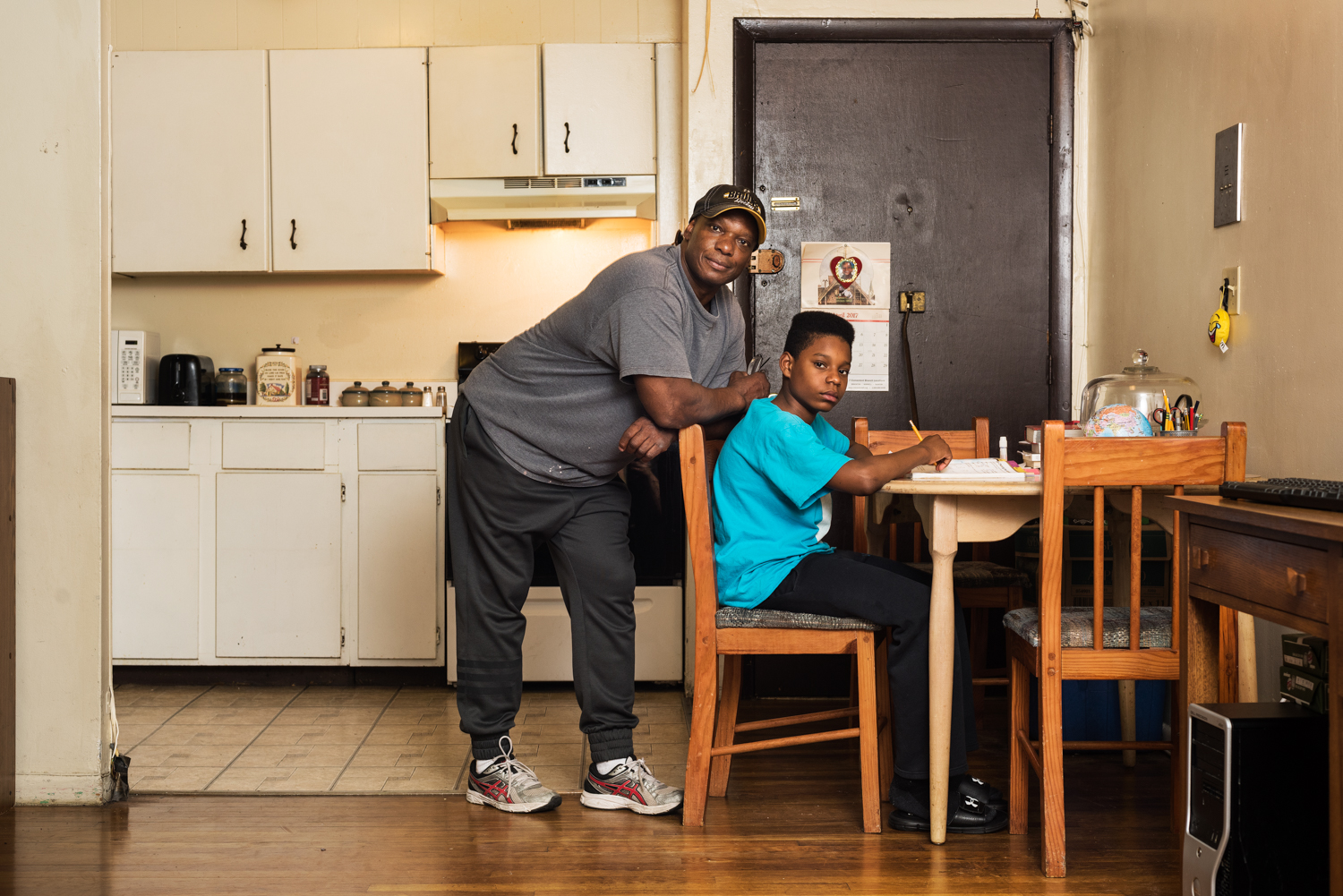
Almost a decade removed from the foreclosure crisis that began in 2008, the United States is facing one of the worst affordable-housing shortages in generations. The standard of “affordable” housing is that which costs roughly 30 percent or less of a family’s income. Because of rising housing costs and stagnant wages, slightly more than half of all poor renting families in the country spend more than 50 percent of their income on housing costs, and at least one in four spends more than 70 percent. Yet America’s national housing policy gives affluent homeowners large benefits; middle-class homeowners, smaller benefits; and most renters, who are disproportionately poor, nothing. It is difficult to think of another social policy that more successfully multiplies America’s inequality in such a sweeping fashion.
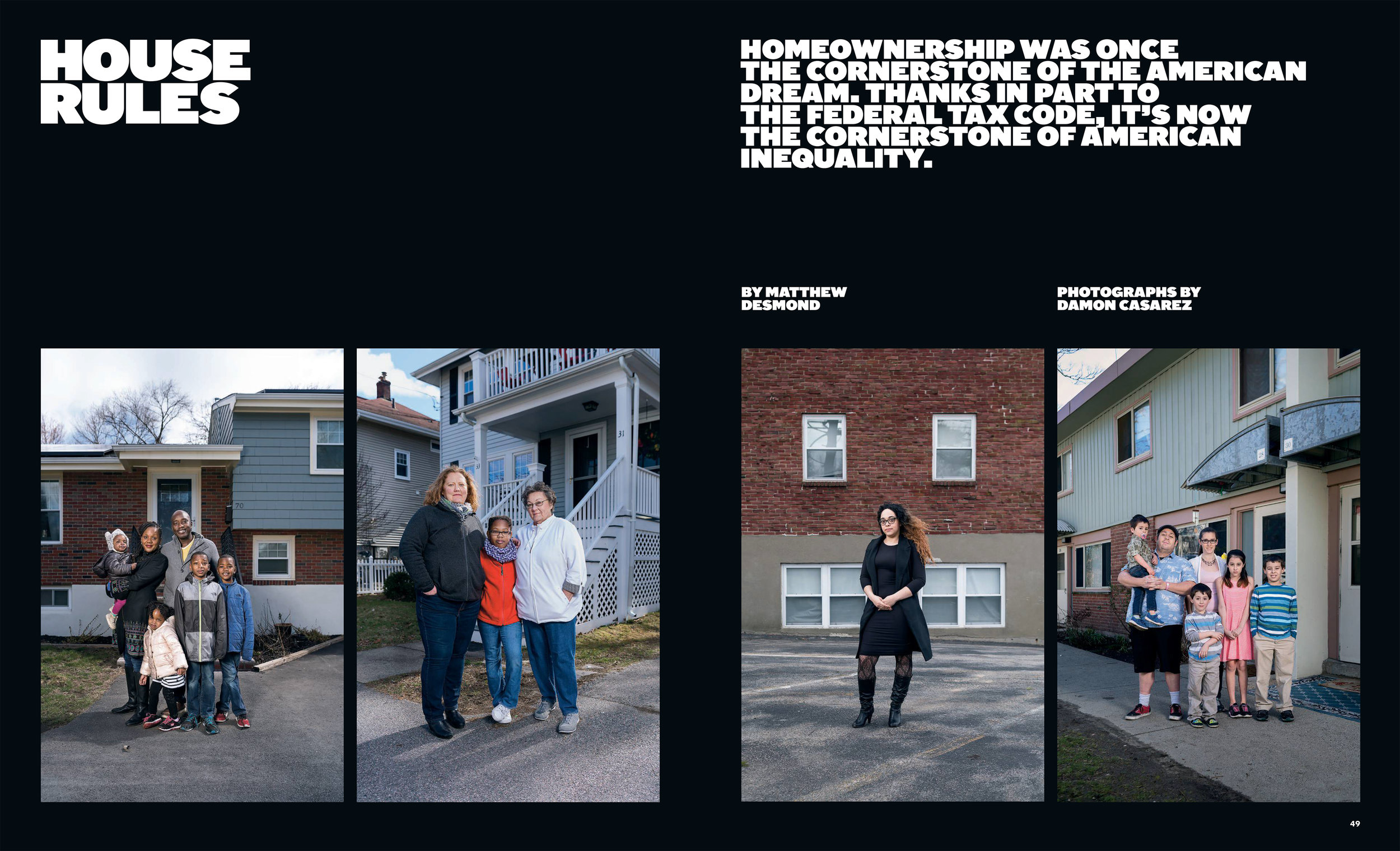
Almost a decade removed from the foreclosure crisis that began in 2008, the United States is facing one of the worst affordable-housing shortages in generations. The standard of “affordable” housing is that which costs roughly 30 percent or less of a family’s income. Because of rising housing costs and stagnant wages, slightly more than half of all poor renting families in the country spend more than 50 percent of their income on housing costs, and at least one in four spends more than 70 percent. Yet America’s national housing policy gives affluent homeowners large benefits; middle-class homeowners, smaller benefits; and most renters, who are disproportionately poor, nothing. It is difficult to think of another social policy that more successfully multiplies America’s inequality in such a sweeping fashion.
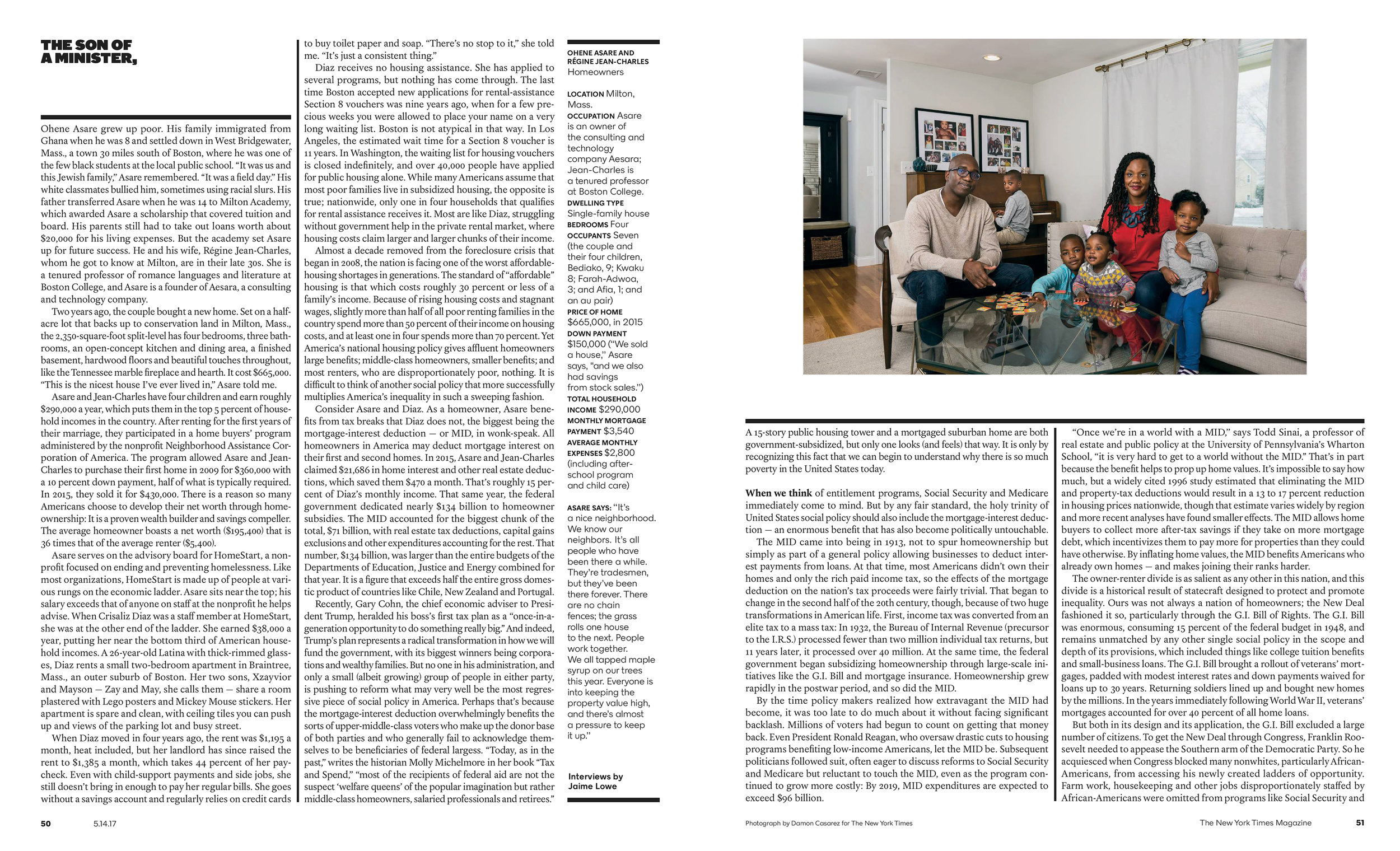
Almost a decade removed from the foreclosure crisis that began in 2008, the United States is facing one of the worst affordable-housing shortages in generations. The standard of “affordable” housing is that which costs roughly 30 percent or less of a family’s income. Because of rising housing costs and stagnant wages, slightly more than half of all poor renting families in the country spend more than 50 percent of their income on housing costs, and at least one in four spends more than 70 percent. Yet America’s national housing policy gives affluent homeowners large benefits; middle-class homeowners, smaller benefits; and most renters, who are disproportionately poor, nothing. It is difficult to think of another social policy that more successfully multiplies America’s inequality in such a sweeping fashion.
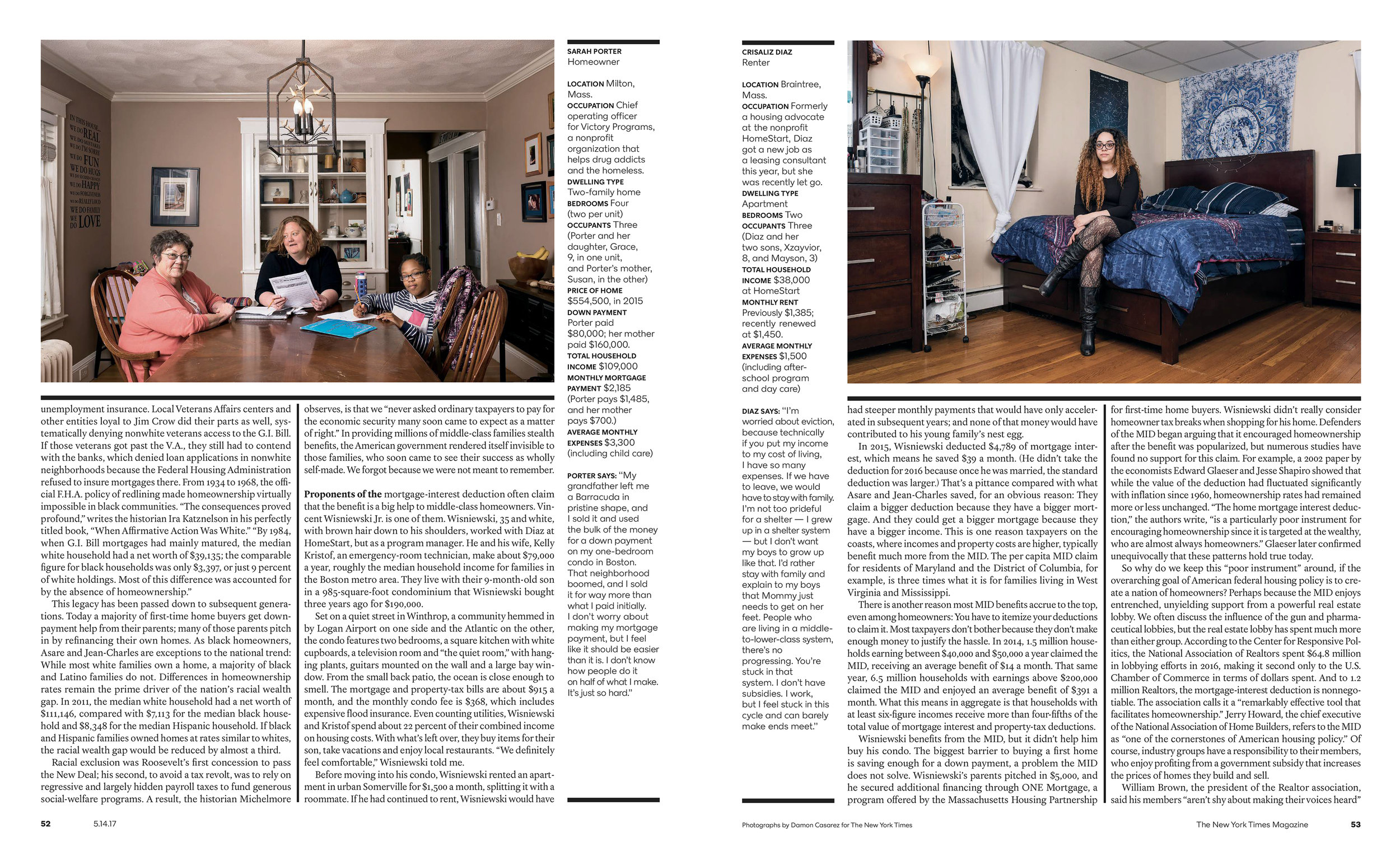
Almost a decade removed from the foreclosure crisis that began in 2008, the United States is facing one of the worst affordable-housing shortages in generations. The standard of “affordable” housing is that which costs roughly 30 percent or less of a family’s income. Because of rising housing costs and stagnant wages, slightly more than half of all poor renting families in the country spend more than 50 percent of their income on housing costs, and at least one in four spends more than 70 percent. Yet America’s national housing policy gives affluent homeowners large benefits; middle-class homeowners, smaller benefits; and most renters, who are disproportionately poor, nothing. It is difficult to think of another social policy that more successfully multiplies America’s inequality in such a sweeping fashion.

Almost a decade removed from the foreclosure crisis that began in 2008, the United States is facing one of the worst affordable-housing shortages in generations. The standard of “affordable” housing is that which costs roughly 30 percent or less of a family’s income. Because of rising housing costs and stagnant wages, slightly more than half of all poor renting families in the country spend more than 50 percent of their income on housing costs, and at least one in four spends more than 70 percent. Yet America’s national housing policy gives affluent homeowners large benefits; middle-class homeowners, smaller benefits; and most renters, who are disproportionately poor, nothing. It is difficult to think of another social policy that more successfully multiplies America’s inequality in such a sweeping fashion.




















Almost a decade removed from the foreclosure crisis that began in 2008, the United States is facing one of the worst affordable-housing shortages in generations. The standard of “affordable” housing is that which costs roughly 30 percent or less of a family’s income. Because of rising housing costs and stagnant wages, slightly more than half of all poor renting families in the country spend more than 50 percent of their income on housing costs, and at least one in four spends more than 70 percent. Yet America’s national housing policy gives affluent homeowners large benefits; middle-class homeowners, smaller benefits; and most renters, who are disproportionately poor, nothing. It is difficult to think of another social policy that more successfully multiplies America’s inequality in such a sweeping fashion.
Almost a decade removed from the foreclosure crisis that began in 2008, the United States is facing one of the worst affordable-housing shortages in generations. The standard of “affordable” housing is that which costs roughly 30 percent or less of a family’s income. Because of rising housing costs and stagnant wages, slightly more than half of all poor renting families in the country spend more than 50 percent of their income on housing costs, and at least one in four spends more than 70 percent. Yet America’s national housing policy gives affluent homeowners large benefits; middle-class homeowners, smaller benefits; and most renters, who are disproportionately poor, nothing. It is difficult to think of another social policy that more successfully multiplies America’s inequality in such a sweeping fashion.
Almost a decade removed from the foreclosure crisis that began in 2008, the United States is facing one of the worst affordable-housing shortages in generations. The standard of “affordable” housing is that which costs roughly 30 percent or less of a family’s income. Because of rising housing costs and stagnant wages, slightly more than half of all poor renting families in the country spend more than 50 percent of their income on housing costs, and at least one in four spends more than 70 percent. Yet America’s national housing policy gives affluent homeowners large benefits; middle-class homeowners, smaller benefits; and most renters, who are disproportionately poor, nothing. It is difficult to think of another social policy that more successfully multiplies America’s inequality in such a sweeping fashion.
Almost a decade removed from the foreclosure crisis that began in 2008, the United States is facing one of the worst affordable-housing shortages in generations. The standard of “affordable” housing is that which costs roughly 30 percent or less of a family’s income. Because of rising housing costs and stagnant wages, slightly more than half of all poor renting families in the country spend more than 50 percent of their income on housing costs, and at least one in four spends more than 70 percent. Yet America’s national housing policy gives affluent homeowners large benefits; middle-class homeowners, smaller benefits; and most renters, who are disproportionately poor, nothing. It is difficult to think of another social policy that more successfully multiplies America’s inequality in such a sweeping fashion.
Almost a decade removed from the foreclosure crisis that began in 2008, the United States is facing one of the worst affordable-housing shortages in generations. The standard of “affordable” housing is that which costs roughly 30 percent or less of a family’s income. Because of rising housing costs and stagnant wages, slightly more than half of all poor renting families in the country spend more than 50 percent of their income on housing costs, and at least one in four spends more than 70 percent. Yet America’s national housing policy gives affluent homeowners large benefits; middle-class homeowners, smaller benefits; and most renters, who are disproportionately poor, nothing. It is difficult to think of another social policy that more successfully multiplies America’s inequality in such a sweeping fashion.
Almost a decade removed from the foreclosure crisis that began in 2008, the United States is facing one of the worst affordable-housing shortages in generations. The standard of “affordable” housing is that which costs roughly 30 percent or less of a family’s income. Because of rising housing costs and stagnant wages, slightly more than half of all poor renting families in the country spend more than 50 percent of their income on housing costs, and at least one in four spends more than 70 percent. Yet America’s national housing policy gives affluent homeowners large benefits; middle-class homeowners, smaller benefits; and most renters, who are disproportionately poor, nothing. It is difficult to think of another social policy that more successfully multiplies America’s inequality in such a sweeping fashion.
Almost a decade removed from the foreclosure crisis that began in 2008, the United States is facing one of the worst affordable-housing shortages in generations. The standard of “affordable” housing is that which costs roughly 30 percent or less of a family’s income. Because of rising housing costs and stagnant wages, slightly more than half of all poor renting families in the country spend more than 50 percent of their income on housing costs, and at least one in four spends more than 70 percent. Yet America’s national housing policy gives affluent homeowners large benefits; middle-class homeowners, smaller benefits; and most renters, who are disproportionately poor, nothing. It is difficult to think of another social policy that more successfully multiplies America’s inequality in such a sweeping fashion.
Almost a decade removed from the foreclosure crisis that began in 2008, the United States is facing one of the worst affordable-housing shortages in generations. The standard of “affordable” housing is that which costs roughly 30 percent or less of a family’s income. Because of rising housing costs and stagnant wages, slightly more than half of all poor renting families in the country spend more than 50 percent of their income on housing costs, and at least one in four spends more than 70 percent. Yet America’s national housing policy gives affluent homeowners large benefits; middle-class homeowners, smaller benefits; and most renters, who are disproportionately poor, nothing. It is difficult to think of another social policy that more successfully multiplies America’s inequality in such a sweeping fashion.
Almost a decade removed from the foreclosure crisis that began in 2008, the United States is facing one of the worst affordable-housing shortages in generations. The standard of “affordable” housing is that which costs roughly 30 percent or less of a family’s income. Because of rising housing costs and stagnant wages, slightly more than half of all poor renting families in the country spend more than 50 percent of their income on housing costs, and at least one in four spends more than 70 percent. Yet America’s national housing policy gives affluent homeowners large benefits; middle-class homeowners, smaller benefits; and most renters, who are disproportionately poor, nothing. It is difficult to think of another social policy that more successfully multiplies America’s inequality in such a sweeping fashion.
Almost a decade removed from the foreclosure crisis that began in 2008, the United States is facing one of the worst affordable-housing shortages in generations. The standard of “affordable” housing is that which costs roughly 30 percent or less of a family’s income. Because of rising housing costs and stagnant wages, slightly more than half of all poor renting families in the country spend more than 50 percent of their income on housing costs, and at least one in four spends more than 70 percent. Yet America’s national housing policy gives affluent homeowners large benefits; middle-class homeowners, smaller benefits; and most renters, who are disproportionately poor, nothing. It is difficult to think of another social policy that more successfully multiplies America’s inequality in such a sweeping fashion.
Almost a decade removed from the foreclosure crisis that began in 2008, the United States is facing one of the worst affordable-housing shortages in generations. The standard of “affordable” housing is that which costs roughly 30 percent or less of a family’s income. Because of rising housing costs and stagnant wages, slightly more than half of all poor renting families in the country spend more than 50 percent of their income on housing costs, and at least one in four spends more than 70 percent. Yet America’s national housing policy gives affluent homeowners large benefits; middle-class homeowners, smaller benefits; and most renters, who are disproportionately poor, nothing. It is difficult to think of another social policy that more successfully multiplies America’s inequality in such a sweeping fashion.
Almost a decade removed from the foreclosure crisis that began in 2008, the United States is facing one of the worst affordable-housing shortages in generations. The standard of “affordable” housing is that which costs roughly 30 percent or less of a family’s income. Because of rising housing costs and stagnant wages, slightly more than half of all poor renting families in the country spend more than 50 percent of their income on housing costs, and at least one in four spends more than 70 percent. Yet America’s national housing policy gives affluent homeowners large benefits; middle-class homeowners, smaller benefits; and most renters, who are disproportionately poor, nothing. It is difficult to think of another social policy that more successfully multiplies America’s inequality in such a sweeping fashion.
Almost a decade removed from the foreclosure crisis that began in 2008, the United States is facing one of the worst affordable-housing shortages in generations. The standard of “affordable” housing is that which costs roughly 30 percent or less of a family’s income. Because of rising housing costs and stagnant wages, slightly more than half of all poor renting families in the country spend more than 50 percent of their income on housing costs, and at least one in four spends more than 70 percent. Yet America’s national housing policy gives affluent homeowners large benefits; middle-class homeowners, smaller benefits; and most renters, who are disproportionately poor, nothing. It is difficult to think of another social policy that more successfully multiplies America’s inequality in such a sweeping fashion.
Almost a decade removed from the foreclosure crisis that began in 2008, the United States is facing one of the worst affordable-housing shortages in generations. The standard of “affordable” housing is that which costs roughly 30 percent or less of a family’s income. Because of rising housing costs and stagnant wages, slightly more than half of all poor renting families in the country spend more than 50 percent of their income on housing costs, and at least one in four spends more than 70 percent. Yet America’s national housing policy gives affluent homeowners large benefits; middle-class homeowners, smaller benefits; and most renters, who are disproportionately poor, nothing. It is difficult to think of another social policy that more successfully multiplies America’s inequality in such a sweeping fashion.
Almost a decade removed from the foreclosure crisis that began in 2008, the United States is facing one of the worst affordable-housing shortages in generations. The standard of “affordable” housing is that which costs roughly 30 percent or less of a family’s income. Because of rising housing costs and stagnant wages, slightly more than half of all poor renting families in the country spend more than 50 percent of their income on housing costs, and at least one in four spends more than 70 percent. Yet America’s national housing policy gives affluent homeowners large benefits; middle-class homeowners, smaller benefits; and most renters, who are disproportionately poor, nothing. It is difficult to think of another social policy that more successfully multiplies America’s inequality in such a sweeping fashion.
Almost a decade removed from the foreclosure crisis that began in 2008, the United States is facing one of the worst affordable-housing shortages in generations. The standard of “affordable” housing is that which costs roughly 30 percent or less of a family’s income. Because of rising housing costs and stagnant wages, slightly more than half of all poor renting families in the country spend more than 50 percent of their income on housing costs, and at least one in four spends more than 70 percent. Yet America’s national housing policy gives affluent homeowners large benefits; middle-class homeowners, smaller benefits; and most renters, who are disproportionately poor, nothing. It is difficult to think of another social policy that more successfully multiplies America’s inequality in such a sweeping fashion.
Almost a decade removed from the foreclosure crisis that began in 2008, the United States is facing one of the worst affordable-housing shortages in generations. The standard of “affordable” housing is that which costs roughly 30 percent or less of a family’s income. Because of rising housing costs and stagnant wages, slightly more than half of all poor renting families in the country spend more than 50 percent of their income on housing costs, and at least one in four spends more than 70 percent. Yet America’s national housing policy gives affluent homeowners large benefits; middle-class homeowners, smaller benefits; and most renters, who are disproportionately poor, nothing. It is difficult to think of another social policy that more successfully multiplies America’s inequality in such a sweeping fashion.
